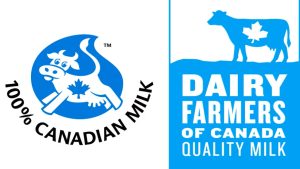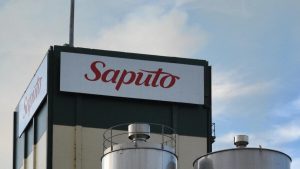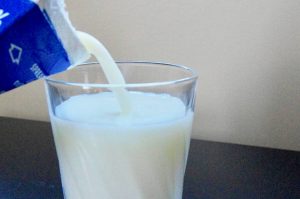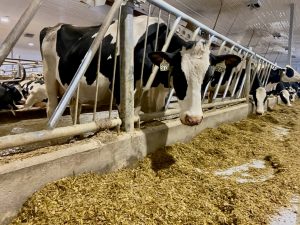
The sister peers out from behind the front door at the Monastery of the Virgin Mary the Consolatory, expecting another religious pilgrim.
If you’re interested in Orthodox Byzantine traditions you will be welcomed warmly. But ask about the nuns’ dairy business and you will be turned away.
Global News travelled to this isolated convent as part of a wider investigation into Canada’s dairy industry. We wanted to ask about the sisters’ public clash with Les Producteurs de lait du Québec (LPQ), the group representing Quebec dairy producers, when the sisters were handed a $75,000 fine for producing milk without a proper licence.
Even three years on, it’s a sensitive topic. While the kind but nervous nun invited me to take shelter from the storm, she also conveyed orders from above not to speak about the ordeal, in case they “get in trouble.”
This fear of reprisal became a central refrain in our months-long investigation, prompted by two unprecedented hikes to the price of milk this year. In six months, milk in many provinces has increased in price by about 20 per cent.
As inflation soars, dairy farmers say price increases are necessary to cover ballooning costs.
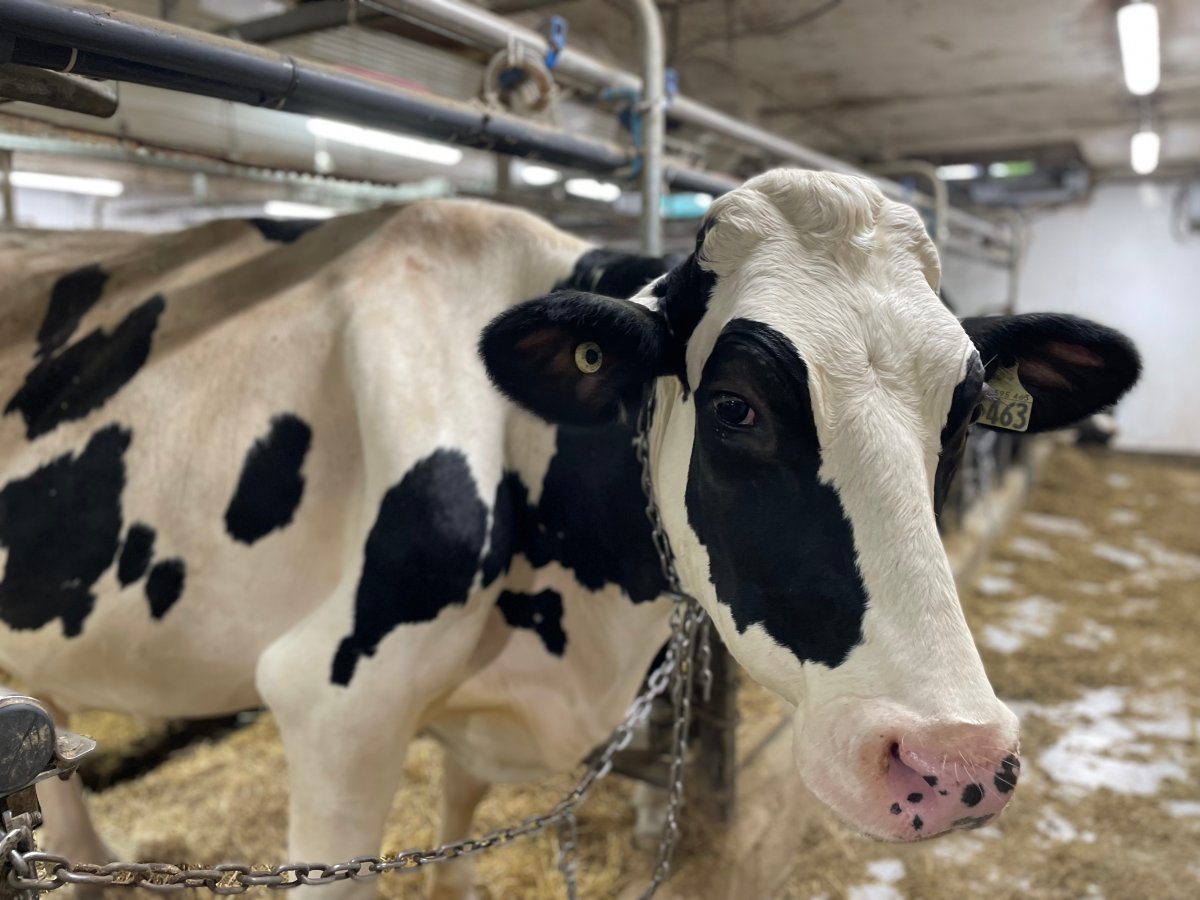
But industry advocates argue that no other industry is able to pass on its cost increases directly on to the consumer. Canada’s controversial supply-management system protects dairy, poultry and egg farmers from international competition by regulating supply and imposing massive border tariffs on imports.
Supply management also forces farmers to pay millions in marketing costs to provincial milk boards. This week, a portion of that money found its way to the upper right-hand corner of the Maple Leaf’s jerseys as the Dairy Farmers of Ontario (DFO) became the NHL team’s first sweater branding partner. DFO refuse to say how much the deal cost.
Amid all this controversy, however, we have seldom heard from the people at the centre of it all: the farmers.
So, we sought to change that, by journeying into rural Quebec — the heart of Canada’s dairy industry.
Home to about half of the country’s dairy farms (4,675 of 9,952), the province boasts two of the country’s biggest processors – Agropur and Saputo – and is the dominant force shaping Canada’s milk policy.
But it’s not the agricultural land of milk and honey we expected to find. Instead, it seems, almost nobody is entirely happy with the way supply management is functioning.
Farmers say they are still struggling. Restaurants say price increases are pushing them to closure. Critics say supermarket prices are artificially inflated without international competition. Politicians, leery of offending voters, don’t say much at all.
This apprehension to talk openly has become a hallmark of Canada’s dairy industry. One industry stakeholder had manure dumped on her lawn after speaking out against supply management. Academics and experts declined to speak on the record because they’d been bullied for it in the past.
But amid the rise of plant-based milk and as the Canadian Food Guide drops dairy from its once lofty perch as a recommended food group, why does Canada’s dairy lobby continue to wield so much power? In what other occupation do members get to dole out fines and write their own salary cheques?
And why, amid simmering internal discontent, does the dairy industry continue to be Canada’s sacred cow?
The silent nuns
For two decades, Virgin Mary the Consolatory nuns produced and sold sheep’s and goat’s cheese in grocery stores around Quebec without an issue, under their Le Troupeau Benit label.
But in 2019, LPQ accused the nuns of selling cow’s milk products without a licence – known in Canada as “quota.” A quota is, in as close to layman’s terms as we can manage, the amount of “butterfat” a farm is allowed to produce, which is transformed into milk, butter and other dairy products. Quota is measured in kilograms, but one kilogram is roughly equivalent to owning one cow.
Still with us?
The nuns denied these claims, saying they milked two Guernsey cows for personal consumption, which doesn’t require a quota. They publicly complained about the fine, but after that, the nuns went silent.
Apparently, there’s a reason for that.
After weeks of dodged calls and emails, a visit to the monastery and another week of evading contact, LPQ confirmed that the two parties had reached an out-of-court settlement.
An eventual reply from the monastery’s administrator, Sister Macrina, cited confidentiality clauses as the reason they wouldn’t speak to us.
“We have decided to put that issue behind us and to focus our attention on other issues, especially prayer and our spiritual peace, the main reason we dedicated our life for,” Sister Macrina said.
Farmers say riches are only on paper
In the tiny village of Saint-Francoise, full of wooden bungalows, grain silos and lush paddocks about 90 kilometres east of Quebec City, Mario Lyonnais is tending to his 35-cow farm on a drizzly Thursday afternoon. It’s a modest operation dominated by a barn in need of a paint job, two tractors and children’s toys littered across the yard.
Lyonnais is a second-generation dairy farmer — he has also been Saint Francoise’s mayor for 25 years. Agriculture is crucial to the village — there are 11 farms (two crop, nine dairy) among a population of 500.
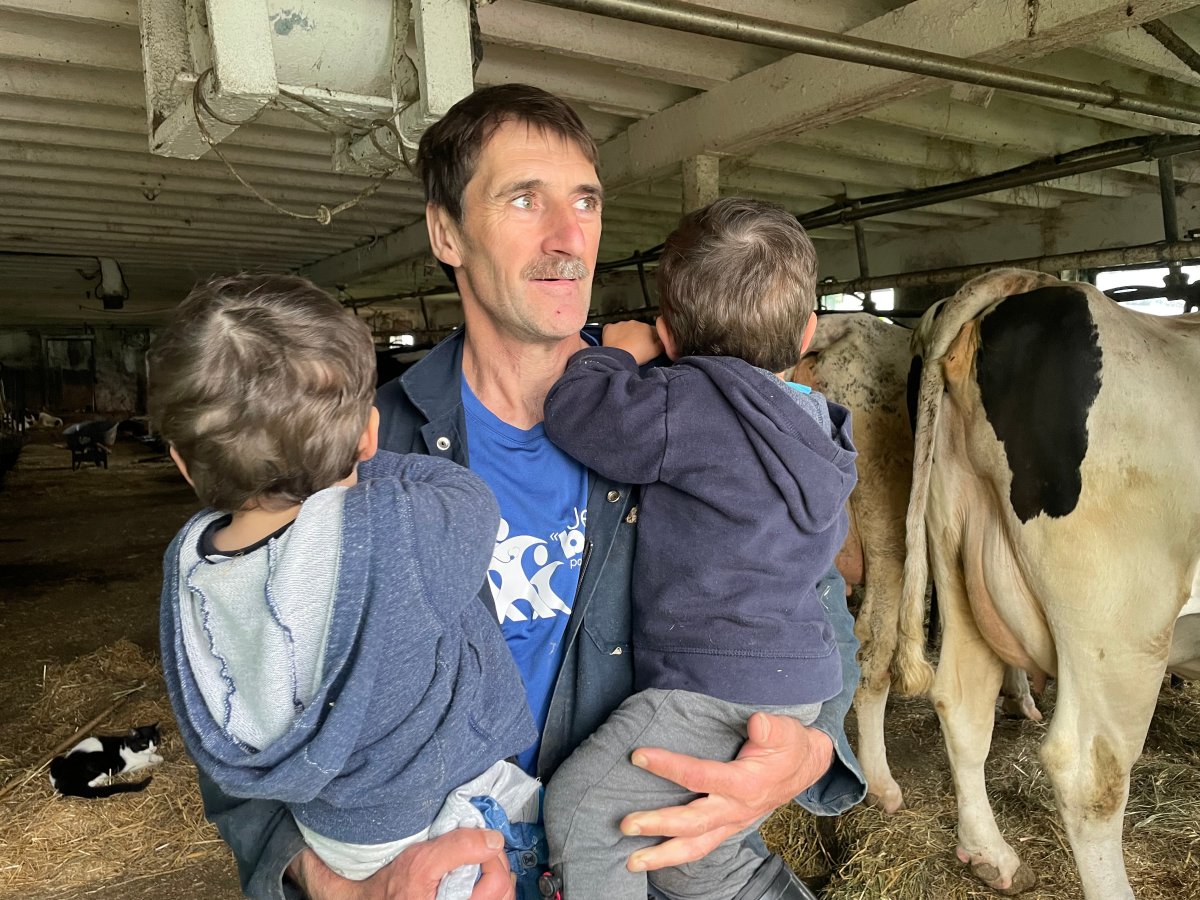
Like most of the farmers we speak to, Lyonnais agrees he’s wealthy — but not in the way people think. His money is tied up in assets and overheads, he explains.
He wears an old pair of dirty overalls, ripped in places, and gumboots while wrangling a twin grandchild under each arm as he explains his farm is just “breaking even.” As modern farms attempt to improve efficiency with milking robots elsewhere, there’s not a mechanical arm in sight here. His home is an old wooden bungalow.
But, like most others, Lyonnais’s fortune lies in his quota.
In Quebec and Ontario, one kilo of quota costs $24,000, and is capped, but in Alberta, it soared to $58,000 in March.
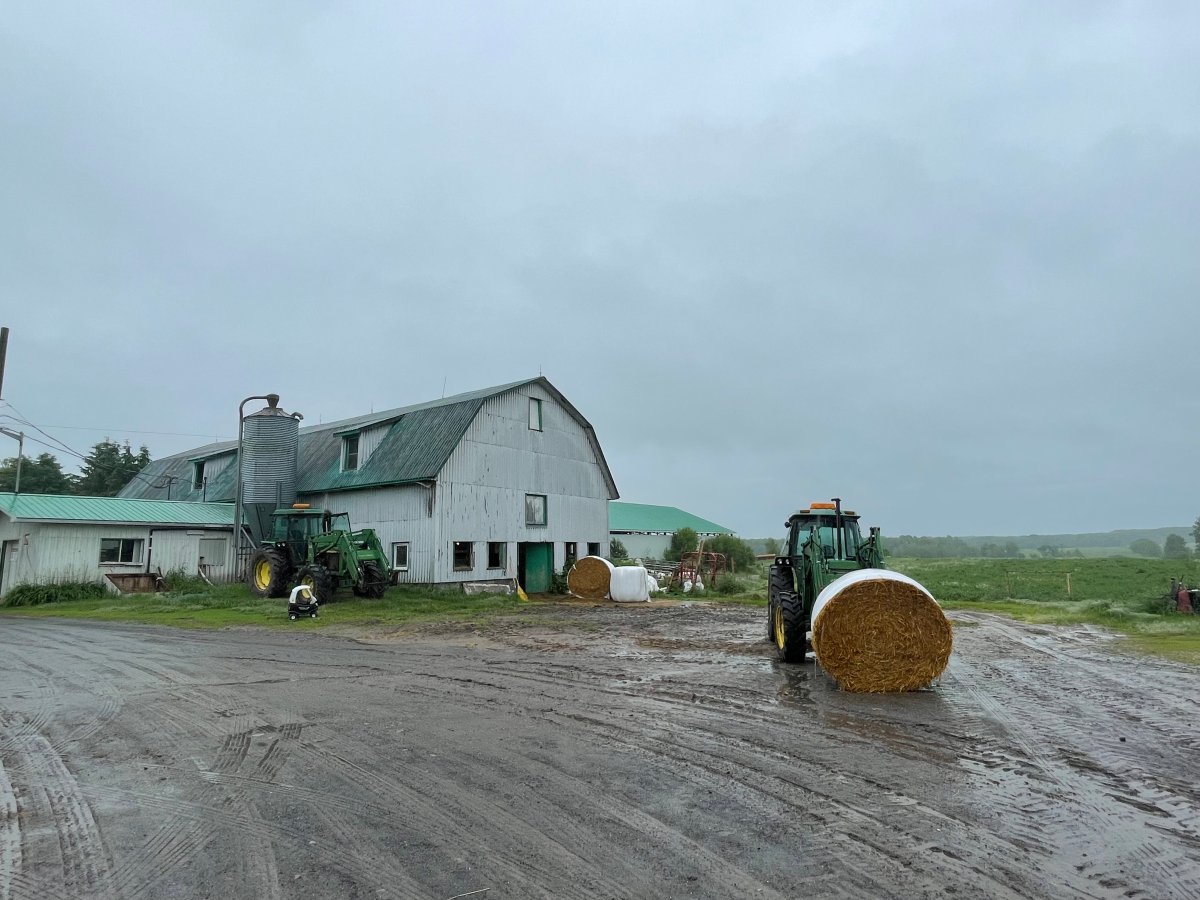
That means a 35-cow farm, such as Lyonnais’ is worth about $840,000 in quota alone.
“Yes I’m rich … on paper,” Lyonnais says. “But I’m not going to just sell my family’s farm.”
Lyonnais says February’s record farmgate milk price increase (the amount farmers are paid for their milk) of 8.4 per cent was not enough to cover costs. He says dairy farming was “already tough and now it’s worse.”
He’s concerned about the impact of a 35 per cent tax on goods from Russia — he buys Russian fertilizer and seeds. While he is not in debt, he’s concerned about the impact rising interest rates will have on younger peers — many of whom had to take out loans to buy quota, which was handed out in the 1970s for free.
To survive, this small community bands together. They have a Facebook group. On a Friday night, they sit around his back porch and drink rum. A call comes in from a young dairy farmer asking for an equipment part. Lyonnais says he’ll bring it over later.
“There’s a psychologist in the town, and they have too many people to see. Suicides and divorces are a worry,” Lyonnais says.
It’s why farmers keep exiting the industry, he says. He hands over a flyer announcing the sale of a nearby farm, shaking his head.
Farms continue to close across Canada
That flyer is for the sale of Marc Duval’s 80-cow farm in Nicolet, Que., about 70 kilometres away.
Duval’s farm is one of hundreds across Canada that will close this year – the continuation of a trend that has seen 30 per cent of dairy farms in Canada disappear in just 15 years. That’s despite one of the central pillars of supply management being to keep family farms in business.
Duval tells Global News he’s selling the farm, which he took over from his father because it has become a “financial burden.”
The price he’s paid for milk isn’t enough, he says, so he’s going to try growing crops instead.
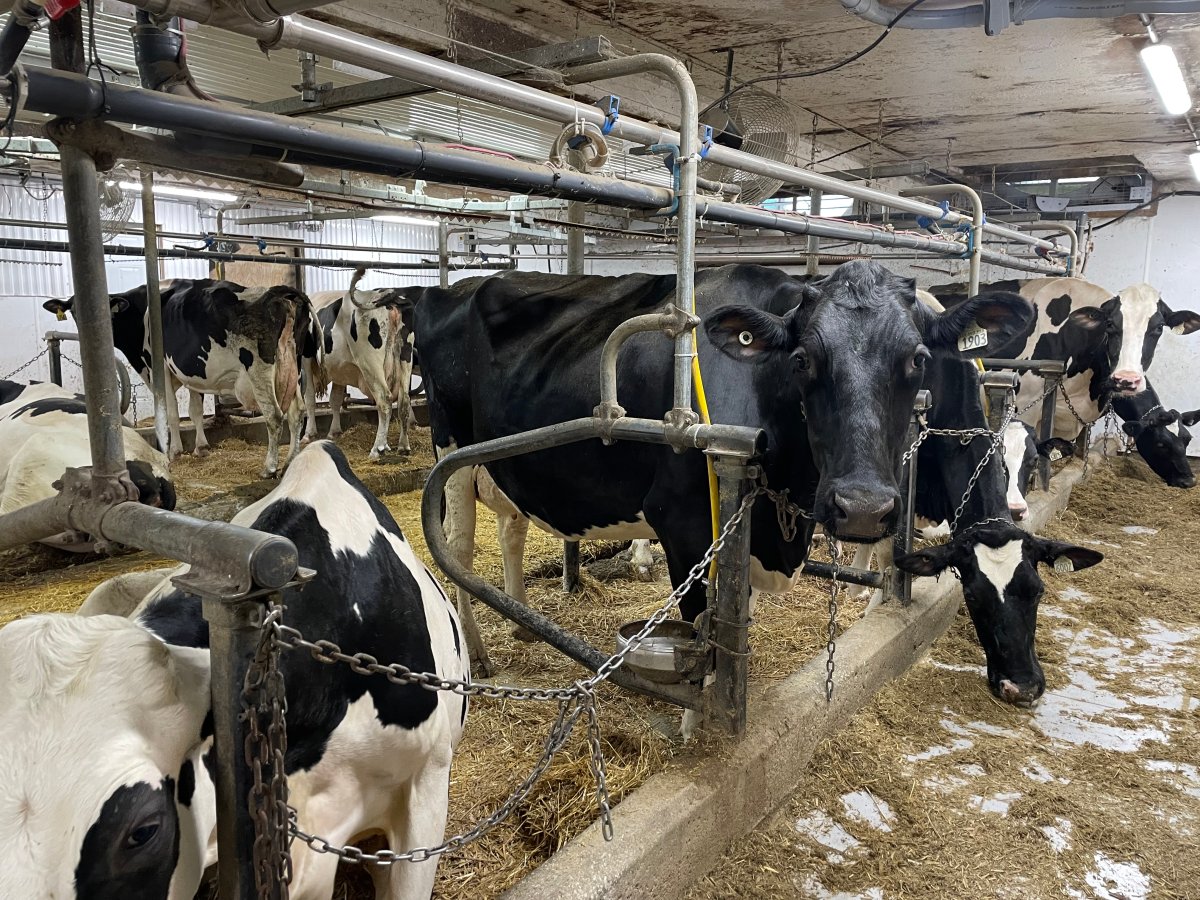
It’s hard to feel too sympathetic for Duval. With a 70-kilo milking quota, he’ll make $1.7 million in the sale of that alone.
But his concerns about day-to-day earnings aren’t unfounded either; financial distress is one of the leading factors of mental illness in farming communities.}
As part of her 2021 PhD thesis, Université du Québec student Ginette Lafleur studied 93 farmer suicide files between 1998 and 2013 in Quebec. She found that 40 per cent were dairy farmers.
Prior to Lafleur’s work, the only available study on rates of suicide among farmers in Quebec was carried out more than 20 years ago, and indicated that it was double that of men in the general public.
The deaths were most commonly related to financial loss and heavy workloads, Lafleur tells Global News, issues that were exacerbated by a lack of social support and a “non-recognition of their work by society.”
Farmers were also less likely to seek help due to a “fear of being perceived as weak and of not being understood by professional services outside of agriculture.”
So, Quebec set up a network of farm social workers (travailleurs de rang) to improve the accessibility of psychosocial support services by working directly with farmers.
But is it enough?
‘Why do I work so much for this?’
In Saint-Barnabe-Sud, near Montreal, fourth-generation farmer Jean-Sebastien Savaria says one of the hardest aspects of being a farmer is the negative perception from the public.
“We’re always getting complaints, and that’s very difficult on our emotions.”
Now, he operates an “open farm” day each September to allow curious townspeople to look around his operation.
Savaria’s 40-cow farm is the epitome of the small family farm that supply management is trying to protect. His parents still live in the property’s 100-year-old farmhouse. His sister lives next door. Savaria and his family live in his grandfather’s old house.
Savaria grew up watching the toll the career took on his father and his “low good quality life, working too much for no money.”
He wanted to become a lawyer instead, but the family calling became too hard to ignore. He wears a Dairy Farmers of Canada (DFC) branded hoodie and pats his cows lovingly on the ears as he speaks.
“I love it. When you do good you get the payback. But when it’s bad, it’s bad.”
Like others, Savaria has had to diversify his farm to make money. He grows crops – corn and soy mostly – which make up about a quarter of his revenue. A decade ago, it was half that.
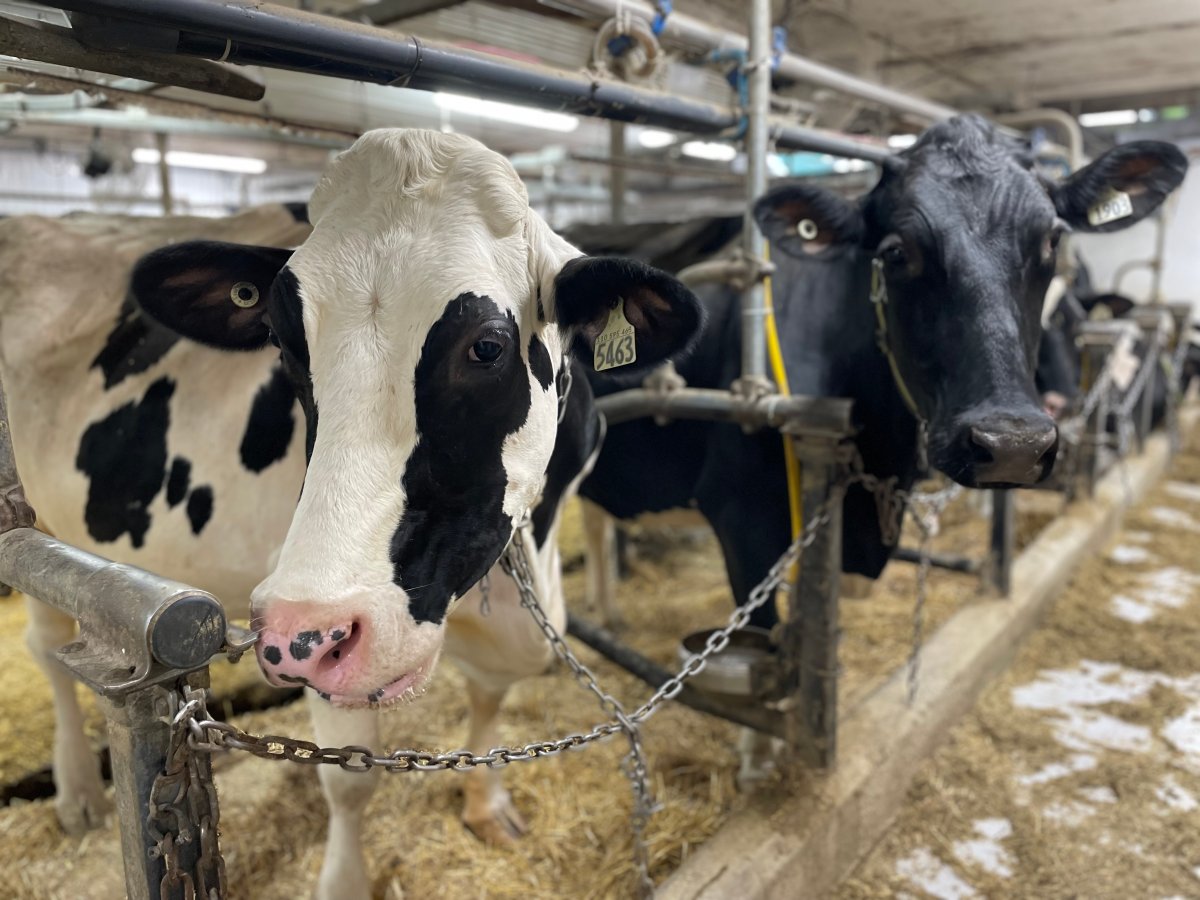
“Why do I work so much for this? Every year it gets less and less,” he says.
Other things get him down too, like milk dumping. Farmers are forced to dispose of milk if consumption patterns change or things go awry. Over Canada Day weekend, two million litres were dumped due to a workers’ strike at Agropur’s Granby plant. At $5.39 per 4-litre bag, that’s roughly $2.7-million worth of milk.
Savaria too says he is a rich man – on paper. He says his salary is $2,000 per month and everything else is reinvested.
In fact, the only farmer we spoke to who says he’s not rich, is the one who appears the richest.
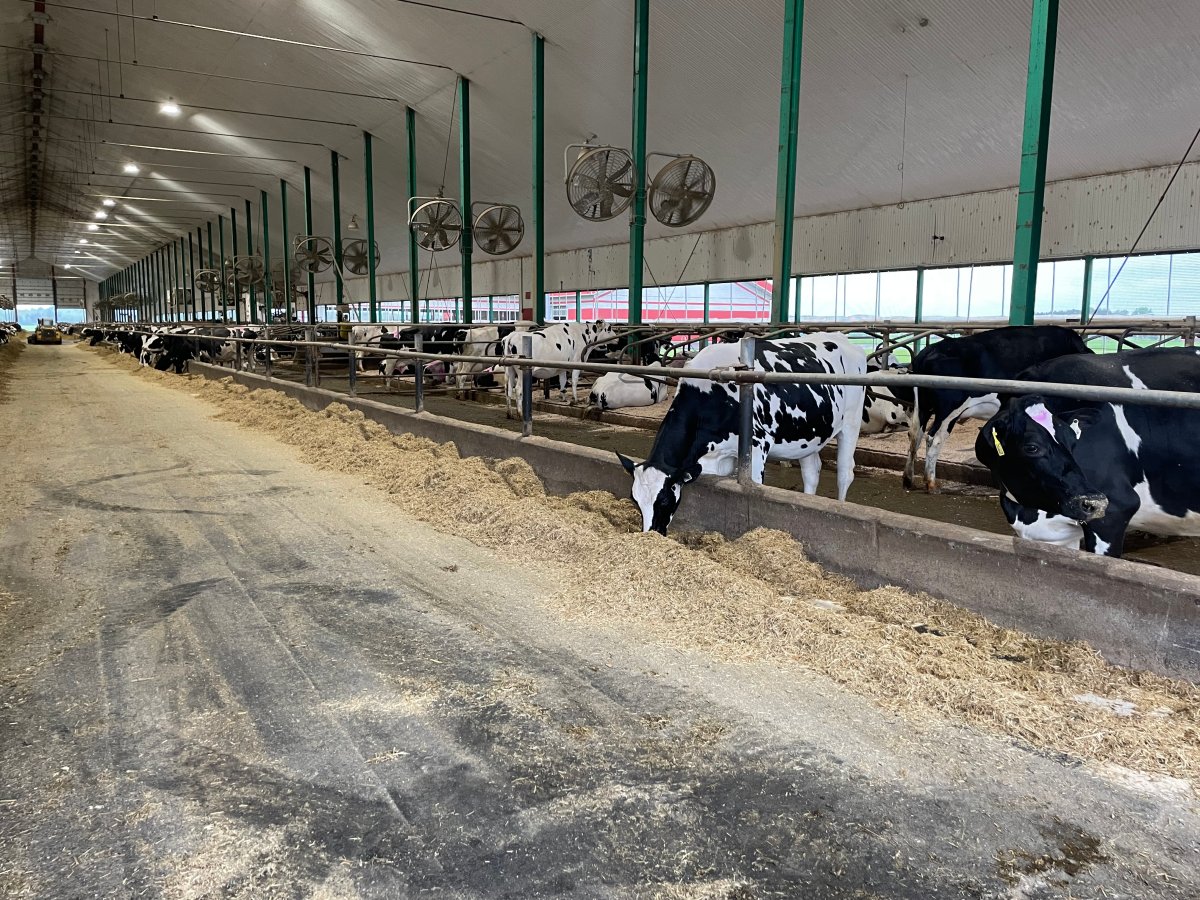
Visitors to Drapeau Farm in Saint-Francoise are greeted in a modern administration building the size of a house. There are laser-cut signs bearing the farm’s name and polished wooden floors. Robots take on much of the workload in the barn. It is a stark contrast to Mario Lyonnais’ basic farm less than 10 kilometres down the road
Owner Dominic Drapeau wears a Drapeau Farm-branded sweatshirt as he recalls his upbringing on an 80-cow farm, which he’s grown to 800. Drapeau reinvests his profits in quota, expanding at a rate of 30 to 40 cows per year.
With the current price of quota, that value alone is $1.9 million.

“We have a comfortable life, and we don’t miss out on anything, but we all work very hard,” he says.
He says he’s not struggling right now, but costs are higher, and he should be compensated fairly with increased milk prices. He says he could make more money without supply management, as his farm is bigger and more efficient, but he doesn’t want to lose it.
“The rules are the same for everyone,” he says. “We are taking care of everyone.”
But critics say those rules, and the organization that imposes them, are part of the problem.
Cost of milk production gets cheaper
The Crown-controlled Canadian Dairy Commission (CDC) sets the price of milk every six months, using a formula split into two parts: one half considers the cost of milk production, using a randomized and anonymous survey of roughly 200 farms, and the other considers inflation.
But there’s a time lag of two years to this equation. For instance, the cost of production data from 2021 dictates 2023 prices.
CDC stakeholders can ask for the formula to be set aside, citing “exceptional circumstances” if certain criteria are met, including unanticipated events and rising costs. The Dairy Farmers of Canada used this mechanism for both pricing decisions this year — a record-breaking 8.4 per cent increase in February and a rare mid-year hike.
This formula has been set aside four times since 2017, when it was implemented, due to rising costs. But the specific proof of these costs is never provided. The CDC has long refused to share its farm survey data.
Global News requested CDC records from the February price hike through access-to-information legislation. The information we received was heavily redacted, with all of the specific farm data missing.
The data that was included showed animal feed accounted for 58 per cent of the 2022 cost of production increase, with 25 per cent due to the increase in the minimum wage.
More recently, leaked documents shared with Global News show the cost of producing milk is actually getting cheaper. In a CDC PowerPoint presentation from July, the 2021 standardized cost of production for milk — used to set 2023 prices — decreased from $85.42 per hectolitre to $84.57 per hectolitre. That should mean that milk gets cheaper next year – but inflation might bring prices up again.
The CDC has also not cut back on its own costs.
According to its annual report, the commission received $4.7 million from taxpayers in 2020-21, up from $3.9 million in 2019-20. The increase was “to fund increased salary expenses.”
Part of that was to fund bonuses and pay raises during the pandemic. In 2020, 57 CDC employees got pay rises (79 per cent of all employees), according to data from the Canadian Taxpayer’s Federation, at a cost of $143,202. In 2021, 48 employees got a raise.
The CDC’s labour costs are up 35 per cent in five years.
While the CDC initially refused to release data on bonuses, it later admitted that five employees were awarded bonuses in 2020 — $16,764 each. In 2021, five employees were given $17,470.
This lack of transparency has landed the commission in hot water with many of its stakeholders, including Restaurants Canada and the Retail Council of Canada.
Even the Dairy Processors of Canada (DPAC) this year departed from its traditionally tight-lipped approach, telling Global News that it too has been asking the CDC for better communication.
Minister of Agriculture Marie-Claude Bibeau has even entered the fray to call for more transparency.
Chantal Paul, CDC spokesperson, said it was already adapting its communications, by including a FAQ section on its website and follow-up sessions with stakeholders.
The CDC has no control over the pricing mechanism itself as it was put in place by industry consensus, Paul says.
Restaurants Canada vice-president Olivier Bourbeau, however, says the commission itself needs to change. He says other supply-managed industries work in ”collaboration, instead of confrontation,” unlike dairy.
Bourbeau and others have long been asking for a seat on the CDC board or for a say in pricing decisions. But he says they are frequently rebuffed, leaving stakeholders feeling shut out and restaurants absorbing costs they can’t take after the pandemic.
Millions spent on milk marketing
Farmers wonder if costs could be cut in other areas — marketing, for example.
Farmers pay annual fees to milk marketing boards, which oversee each province’s dairy industry, to promote the consumption of milk.
LPQ spends $24 million per year on advertising and social media. Dairy Farmers of Ontario (DFO), Canada’s second-biggest milk producer, spent $15.6 million on brand advertising and mass media in 2021 (like these kitschy social media campaigns). Around $8 million is earmarked for consumer marketing.
This year, the Toronto Maple Leafs will sport DFO’s “Milk” patch on their jersey in a multi-year agreement for an undisclosed sum.
Asked how much the deal cost, an external marketing firm offered this response from Cheryl Smith, DFO chief executive: “While specific terms of this deal are confidential, it is an extremely unique opportunity for DFO to increase milk consumption, and one that will deliver results.”
In 2021, from an expense budget of $55 million, DFC spent $22.3 million on marketing — including $6.9 million on “marketing to millennials.”
But research shows the price of dairy is more likely to influence consumers than generic marketing.

Sainte-Élizabeth-de-Warwick cheesemaker and dairy farmer Jean Morin says he pays $25,000 in marketing each year. He thinks that money should be redirected to “coming up with solutions to save dairy farming.”
Morin’s award-winning cheeses, produced on a homestead across the road from his 140-cow, fourth-generation dairy farm, have put the picturesque village on the map. He says 6,000 customers came to buy his cheese in 2021. His picnics and weekend street parties draw thousands — and that’s all down to personal marketing.
He pays himself $15 per hour, and the rest is reinvested in his businesses. He doesn’t claim to be struggling — he spent $1 million renovating the church next-door to store his cheese and just bought the village’s general store. But he worries for the future of the industry.
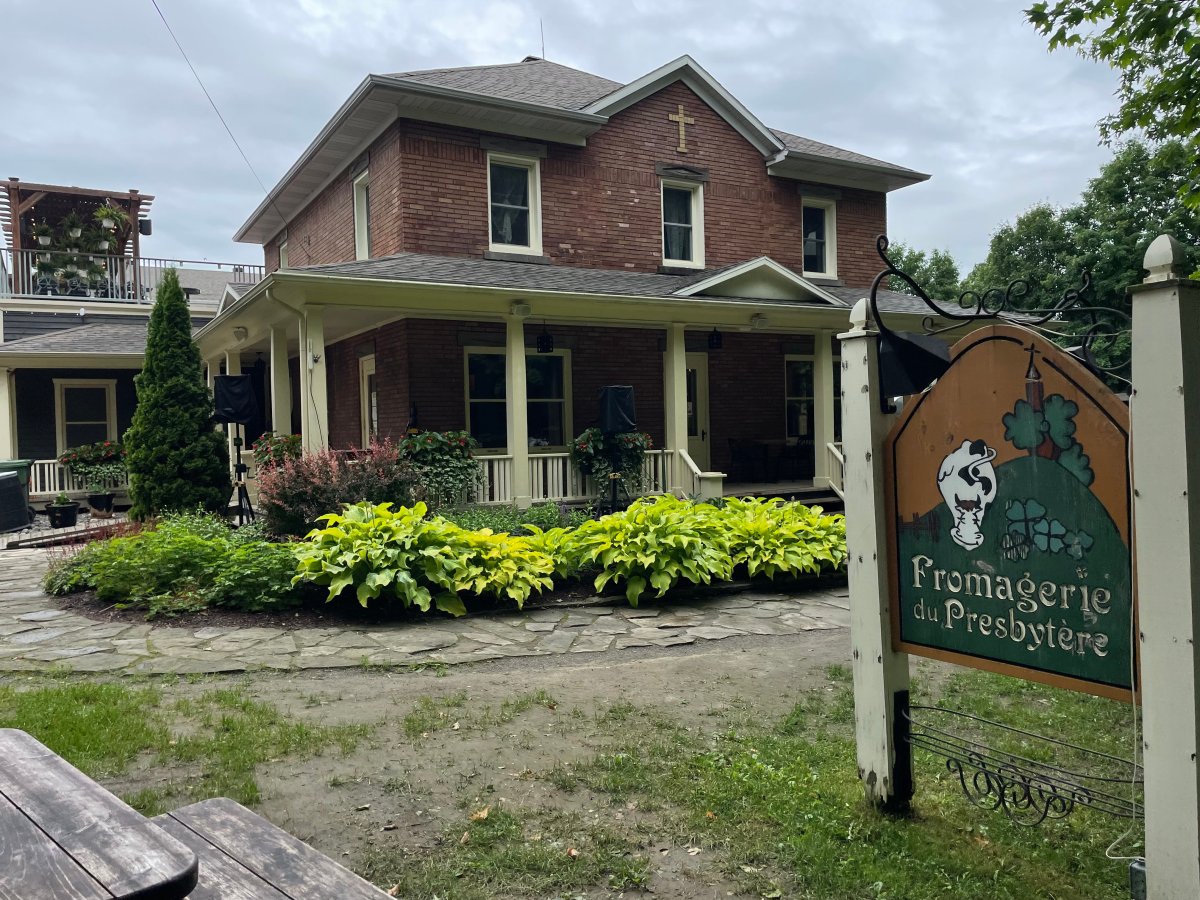
“The system is keeping out the younger generation. They can’t get into the business because it’s too expensive,” he says, referring to the high cost of quota.
“DFC is a private club for rich people. They just want to make more money, and they don’t want to do better.”
Morin laments the fact that cheese has now become a “luxury item.” He says the industry is also too monopolized.
In Canada, three main processors transform the bulk of our products into cheese, drinkable milk and butter: Saputo, Lactalis and Agropur.
Saputo and Lactalis did not respond to questions.
Agropur, a collective made up of Canadian dairy farmers, posted $274 million in net earnings in 2021 — a 600 per cent increase on 2020. Asked about this windfall at a time the industry says it’s struggling, an Agropur spokeswoman said their profitability “ensures the sustainability of the cooperative and offers members equity.”
But those members are farmers — the same people saying they aren’t being paid enough.
Supermarkets add on own costs
After processing, dairy products head for the supermarket shelf — arguably the least transparent part of the supply chain.
In February, consumers worried that the record 8.4 per cent CDC increase would directly apply to the price they paid for milk. But it didn’t — it was more.
Milk was increased in several provinces by doubling the farmgate increase. The same happened earlier this month when retail prices rose by 6.0 per cent instead of 2.5 per cent.
Milk prices are also uniform – in Ontario, the cheapest four-litre bag is now $5.69 at Walmart, FreshCo, Metro and Loblaws.
We emailed several supermarkets — Loblaws, Sobey’s, Walmart, Metro — to ask about these pricing decisions. All of them refused to comment.
Recent price hikes mean dairy alternatives are now almost the same price as a two-litre carton of milk. A recent study by the Agri-Food Analytics Lab at Dalhousie University found dairy alternatives were actually cheaper than milk in Ontario, Prince Edward Island and Quebec.
Processors and farmers say the final price of their goods has nothing to do with them.
“The pricing decisions are very tough to manage,” says Luc Boivin, director-general at Fromagerie Boivin in La Baie, Que.
“On one side we have farmers and milk increases every six months, and on the other side we have a relationship with our customers, and that’s very tough.”
Boivin says it makes no sense that the farmgate price is heavily regulated when the rest of the process is not, and a grocery code of conduct was needed.
‘This system is serving… elected politicians’
In 2015, University of Manitoba research labelled supply management in Canada “highly regressive” and disproportionately impacting low-income workers, who pay a tax of 2.29 per cent, or $339 per year of household income. Wealthy households pay just 0.47 per cent.
Study author associate professor Ryan Cardwell, says seven years later, “the story is unchanged.”
Cardwell says these “serious unintended consequences of supply management” are unlikely to be curbed without the intervention of politicians and industry reform. But politicians won’t interfere for fear of losing votes.
“This system is serving the interests of elected politicians and dairy farmers very well,” he says.
Indeed, it’s rare to find a politician who opposes supply management.
Former Conservative MP Maxime Bernier did, and he says it cost him the party’s 2017 leadership race — not, you know, his far-right views or publicly stating that China has “less government and more freedom” than Canada. Andrew Scheer, who won the leadership, publicly celebrated a week later by swigging from a milk carton.
Reflecting on the saga now, Bernier doesn’t regret a thing.
“Other politicians are against supply management. … I’m just the one who said it publicly,” he tells Global News.
Since Bernier, scarce few politicians have publicly opposed supply management until Conservative leadership hopeful Scott Aitchison reignited the debate this year by calling for a government buyback scheme to compensate farmers for their quota.
A Montreal Economic Institute (MEI) study in 2017 suggested this would cost $13 billion and could be clawed back via a temporary tax, like Australia used when it disestablished supply management in 2000.
“For example, Canadians could pay $2.31 for a two-litre carton of milk from the start of liberalization, and $2.08 after the reimbursement period, instead of the current price of $4.93,” the study says.
That $13 billion isn’t much more than the amount farmers had to be compensated for trade deal concessions.
Valentin Petkantchin, MEI director of research, says supply management was a “lose-lose situation for everyone now.”
“Canadians are not stupider than Australians. We can change this,” he says.
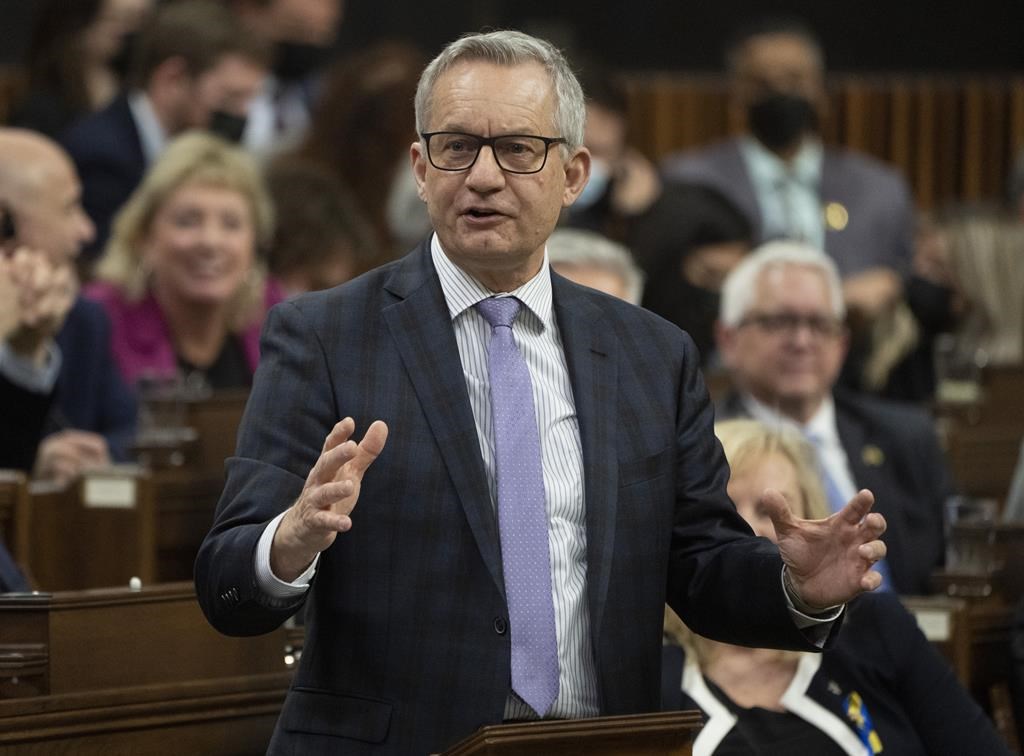
It will also help Canada around the negotiating table — dairy is one of the hardest-fought points of our trade deals.
In 2015, the Trans-Pacific Partnership (now known as the CPTPP) opened up 3.25 per cent of the Canadian dairy market, drawing ire from farmers.
Former Trade Minister Ed Fast, who negotiated the deal, says supply management was the “most sensitive defensive interest” for Canada.
But he says it is “patently false” that politicians are pressured to protect farmers.
“The reality is in Canada, supply management for those products has been in place for many years, and there’s not a general clamour across Canada to change that system,” he says.
He has a point.
Cows take centre stage
In 2017, an Angus Reid survey showed that 58 per cent of Canadians know “nothing at all” about how supply management works.
The dairy industry is so misunderstood that it inspired a stage show. Run de Lait premiered in Quebec City in March, a culmination of five years of research by actor and director Justin Laramee. He’s now in talks with the National Film Board of Canada to turn it into a documentary.
Laramee’s journey from farm to theatre began while working on a project on suicides in dairy farming. Enamoured by the industry, he offered to work on farms for free to understand them.
That snowballed into interviewing widows and investigating Agropur’s exports to Africa.
The final product sees Laramee on stage alone with a composer for three acts that investigate farmers, processors and the politics behind it all.
“It’s something between Birdman and a black-and-white film,” he says with a laugh.
Laramee believes supply management has to go. But in the meantime, he hopes putting a spotlight on the industry — literally — might help the public make up its own mind.
“Two years in and I was hating myself for picking this topic — I just thought this is not interesting,” he adds.
“But that’s the problem, people don’t understand it, so they don’t care about it.”
.




